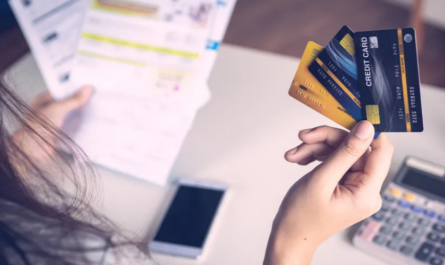In order to have your basic living needs, such as housing and food, covered, you still need to carefully arrange your budget. Debt management complicates already complicated budgetary needs. Credit card payments can add up quickly, so you may have to cut other spending to pay them.
While it’s true that keeping your monthly income steady could make it difficult to think of ways to pay off debt more quickly, starting on the right track is much easier with a plan. Follow these simple budget recommendations to get out of debt using a plan that fits your needs.
A Recap of Needless Expenditures
A comprehensive budget will ensure you cover all your regular expenses, but it will also highlight unnecessary spending, enabling you to identify ways to reduce it. Instead of putting expenses in broad buckets, write them all down. This will help you see exactly where your money is going. So, you can decrease non-essential spending and put that money toward paying down your debt.
To begin, create a two- or three-month spending log. Looking at previous bank statements is another option, provided that the charges are legible enough for you to recall the exact amount. Jump straight to the heart of the matter. Doing so may reveal that “inexpensive” splurges and subscriptions or services you don’t use add up to a lot.
Complete the purchase
At times, budgeting can feel a little disorganized because round numbers aren’t always applicable. Still, there’s no rule that says you can’t consolidate everything to make things easier.
A simple way to keep track of your debt payments and maybe even put a little more money toward your payments each month is to round them up to the nearest $1 (or even the nearest $5). Despite its small size, it will allow you to pay off your debt more quickly and even avoid paying some interest.
You also have the option of rounding up any and all purchases. That, once again, makes budgeting math easier and faster to handle. A little emergency fund will also be available in your account by the month’s end. Put that money toward the debt with the highest interest rate, or save more for an emergency.
When you don’t have a savings account to fall back on in case of an emergency, the second choice is usually the better one. Instead, go for a high-interest debt if you have a substantial amount saved up.
Consistently pay your bills
An example of a revolving debt is a credit card or line of credit where the minimum payment can change over time. They usually take into account both the interest you pay each month and a specific proportion of your overall debt. Your present balances determine your minimum payments, making them subject to change.
Put the present monthly payment toward a revolving debt if you are concentrating on paying it off and will not be charging any additional amounts to it. Plus, keep paying the higher amount, even if the minimum payment decreases as you reduce the debt. This method will enable you to quickly reduce the amount of interest you’ll pay and gain control over the principal. Another perk is that it makes monitoring expenses much easier by standardizing them in your budget.
On pay days, prioritize your spending
You shouldn’t stop at merely outlining your spending when making a budget; you shouldn’t just outline your expenses. Instead, set them to expire on your paydays. Next, pay all of your bills as soon as your salary comes in. Pay manually or set up automatic payments to be due on the same day.
Consider how quickly late fees on accounts can build up, either increasing your total debt or the amount you’ll have to pay each month going forward. The annual percentage rate (APR) for a penalty can typically reach double digits. Interest rates of 29.99% are typical for credit cards. Such a high rate could be a hindrance when you are attempting to eliminate your debt. Avoid incurring such fees by linking all of your expenses to a specific paycheck and transferring funds immediately upon receipt of payment.
Accept zero-based budgeting programs
With a zero-based budget, you set a specific monthly goal for how much money you’re going to put into a certain category. You should spend all your revenue by the end of the month or leave none unclassified.
The reasons for this revenue could differ. A portion of your budget can go toward savings in addition to covering current expenses. If there’s any leftovers, give them something to do. Paying down your debt principal with the highest interest rate is a wise move when managing your debt.
Budgeting your approach to reduced balances is essentially deciding to put all of your leftover money towards paying down your debt. To be sure, you’re saving money, but you’re also taking care of your most basic requirements. For the vast majority of people, that means this is the best choice.
We are paying off one debt at a time into another
Put off buying unnecessary items until you’ve paid off your debt. To get out of debt faster, you should contribute the amount you owe plus the amount you still owe to your highest-interest debt each month.
Transferring the payment from the paid-off debt to another can allow you to handle the next balance more quickly. Paying less interest overall is another benefit of concentrating on the debt with the highest interest rate. Every time you pay off a loan, use this approach. You could conquer everything sooner than you think.
Use only cash when buying
While it’s simple to use a credit or debit card, doing so can lead to wasteful spending. Credit cards have a different psychological effect than cash, so you may overspend. Being out also makes it easier to forget your account balance.
People may naturally be more frugal if they have to pay cash for groceries, gas, and other related necessities. The feeling of having your available funds dwindle is powerful. As a result, you might be more cautious to avoid making needless purchases.


